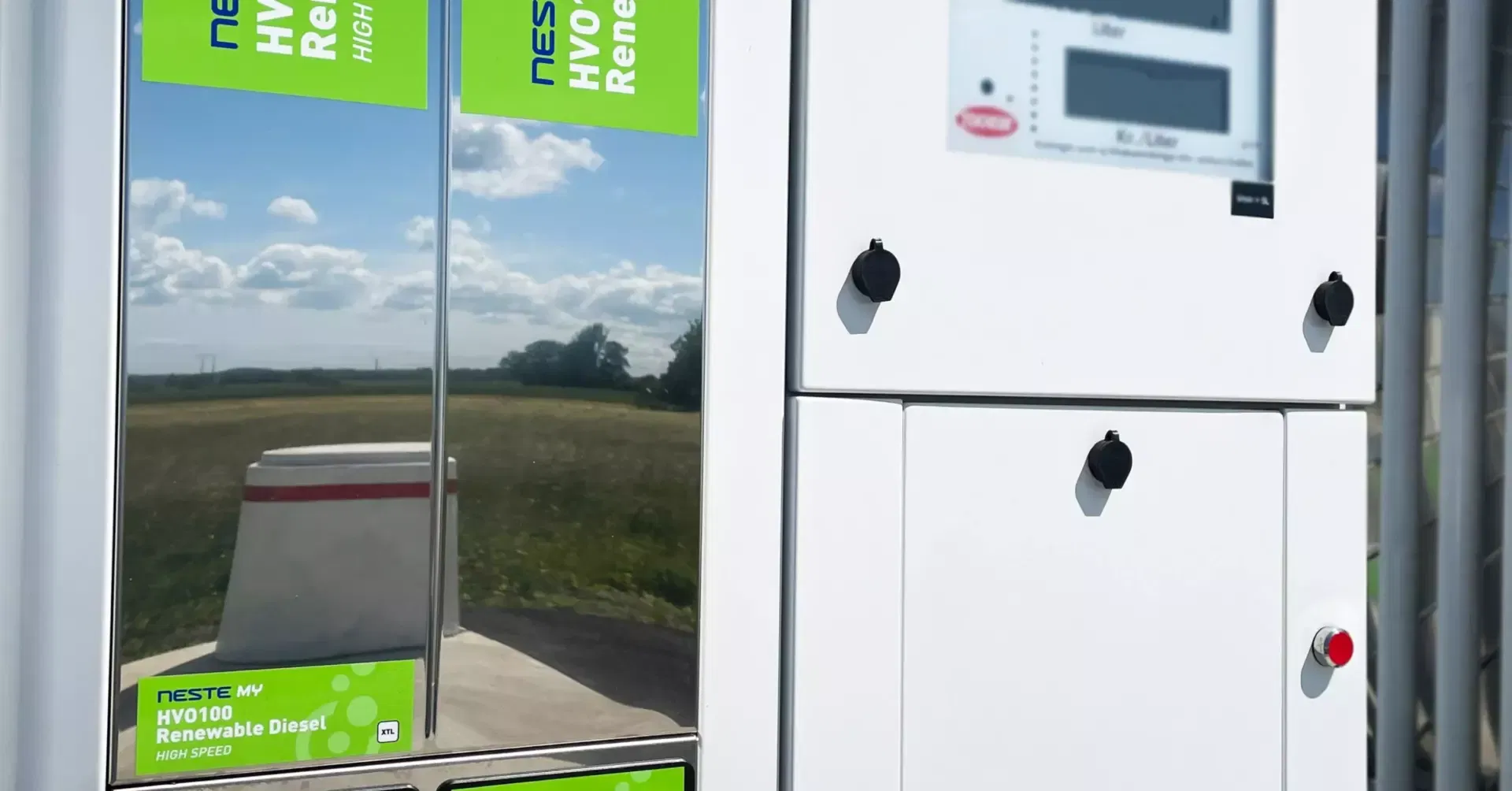

At Biofuel Express, sustainability isn't just a buzzword—it has been the driving force behind everything we do for more than 15 years. We actively work to convert heavy transport into fossil-free fuels and decarbonize our customers’ entire supply chains. As a proud Neste MY reseller in Sweden and Denmark, we offer the highest quality HVO100 Renewable Diesel on the market.
While we're passionate about the benefits of renewable fuels, we understand that seeing is believing. That's why we invite you to watch our informative video, produced by Neste, on the importance and benefits of renewable fuels. Watch the video below and learn more about how renewable fuels can transform the way we fuel transportation and build a sustainable future.
Addressing Environmental Concerns
It is no secret that the transport sector is a significant contributor to global energy consumption and give rise to large scale emissions (about 25 % of total emissions worldwide and 33 % in Sweden alone are transport-linked). Fossil fuels like oil products, natural gas, and coal, which power much of the transportation sector, are non-renewable resources. When combusted, these fuels release vast amounts of carbon dioxide (CO2) into the atmosphere, exacerbating climate change. By shifting towards renewable fuels, derived from constantly regenerating sources, we mitigate the release of carbon previously trapped deep underground in the form of petroleum or natural gas.
Closing the Carbon Loop
Unlike fossil fuels, the renewable fuels we provide are essentially produced from two different kinds of feedstocks – food and feed crops and wastes and residues as categorized in the Renewable energy directive III, Article 26 and Annex IX respectively. The first kind of said feedstocks, crops, have a lifecycle in which photosynthesis (arguably the most important chemical process on earth, where plants turn CO2 and sunlight energy into sugar and oxygen) plays as significant role (see specifically the last three formula components below). The crops therefore have a natural carbon capture and storage mechanism which basically operates their entire life ultimately resulting in a net CO2 uptake.
So, when we burn biofuel made from crops, say rapeseed oil, we release about the same amount of carbon dioxide into the atmosphere as we would any diesel fuel equivalent. The key difference is that when we calculate the emissions, we are not just looking at the combustion process, we are looking at the lifecycle of the product burned. This means that we add all net additions of CO2 to the atmosphere as well as subtract all net uptakes resulting in a much lower net emission value. And that is the beauty of biofuels.
Alright, but what about the other feedstock category, wastes and residues? Why are their emission values even lower? Well, to understand that we need to have a quick look at how the emissions are calculated for biofuels used in the transport sector. Luckily, this is “plainly” laid out in the Renewable energy directive III Annex VI section B fittingly called “methodology” and goes as follows:
Where
Now, of course there are a lot to take in looking at this formula but the one thing to focus on to understand the difference between the two feedstocks is the fact that the formula components eec and el are in fact equal to zero when calculating emissions for wastes and residues. This, in turn, means that when, say used cooking oil, is used in the production biofuels we only add the emissions from production, transportation and fuel use meaning that the sum of all the parts is much lower than the inclusion of agriculture cultivation for example. This is reasonable right? Logically, there is no cultivation of… well, waste. But… wait, used cooking oil is an oil product, right? Derived from crops, say olives? Why is that cultivation not taken into account? Excellent question. That is a topic to be explored in coming knowledge articles when we delve deeper into the intriguing subject of lifecycles. Come to think of it, this is a great reason for you to subscribe and stay updated on our forthcoming content.
Utilizing Existing Infrastructure
One of the most significant advantages of renewable fuels is their compatibility with existing infrastructure. They can seamlessly integrate into today's vehicles, aircraft, ships, and distribution systems, leveraging the infrastructure already in place. This characteristic facilitates a smoother transition away from fossil fuels and towards sustainable alternatives without requiring extensive overhauls or investments in new infrastructure.
Immediate Availability and Scalability
Renewable fuels offer a practical solution to the pressing need for emissions reduction. Unlike some emerging technologies, renewable fuel technologies are proven and commercially available today. With rapid scale-up potential, they provide a tangible path towards decarbonizing the transportation sector and achieving ambitious climate targets.
Embracing Renewable Solutions
Whether it's renewable electricity, renewable hydrogen, or renewable fuels, the imperative to transition away from fossil fuels towards sustainable alternatives is clear. Renewable fuels offer a viable pathway to reduce emissions, improve air quality, and foster energy independence.
In conclusion, the adoption of renewable fuels is essential for combating climate change and building a more sustainable future. By embracing renewable solutions, we can drive innovation, reduce emissions, and ensure a cleaner, greener planet for generations to come. Let's embark on this journey towards sustainability together.
"*" indicates required fields
"*" indicates required fields